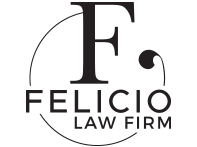
Registering an easement in New South Wales (NSW) involves a legal process that allows a property owner to use a portion of another’s land for a specific purpose, such as access, drainage, or utilities. Knowing the various types of easements and the steps to register them is essential for property owners, developers, and anyone engaged in real estate dealings. This article outlines the key steps to register an easement and the various types of easements you may encounter in NSW.
What are Easements in NSW?
An easement is a legal right that allows one property owner to use another person’s land for a specific purpose, such as access, drainage, or utility installation, without owning the land. It grants enduring, enforceable rights that remain valid even if the land changes ownership. However, easements do not transfer land ownership. These simply allow certain uses of the land.
In property law:
- Dominant Tenement: The property that gains the benefit of the easement..
- Servient Tenement: The property that is burdened by the easement.
For example, if you need to cross a neighbour’s property to access the street, your property is the dominant tenement, while the neighbour’s property is the servient tenement.
Easements in NSW are regulated by:
- Real Property Act 1900 (NSW): Regulates the process pf registering easements on Torrens title properties.
- Conveyancing Act 1919 (NSW): Provides the legal framework for creating, modifying, and removing easements, ensuring they are enforceable.
- Common Law Principles: Help define the rights and obligations related to easements through court rulings.
Types of Easements in NSW
Classification by Legal Origin
|
Type |
Description | Legal Basis |
Notes |
|
Express Easements |
Created by mutual agreement between parties | Agreement between parties, registered with NSW Land Registry Services |
Most commonly used type of easement in NSW |
|
Implied Easements |
Arise from necessity or implied intention | Common law principles |
Includes easements for landlocked properties |
|
Prescriptive Easements |
Arise from long-term, uninterrupted use | Minimum 20 years of continuous use “as of right” |
Can be valid on Torrens title land, but rare |
| Statutory Easements |
Created or imposed by legislation |
Conveyancing Act 1919, Strata Schemes Development Act 2015, etc. |
Typically created for public infrastructure needs |
Classification by Purpose
|
Purpose |
Description | Common Creation Methods | Examples |
| Access Easements |
Allow passage or access across another’s land |
Express, Prescriptive, Implied |
Right of Way, Right of Carriageway |
|
Service/Utility Easements |
Permit installation and maintenance of services |
Express, Statutory |
Electricity, water, sewerage, gas, telecommunications |
|
Drainage Easements |
Allow water flow across properties |
Express, Statutory |
Stormwater drainage, watercourse maintenance |
| Support Easements |
Provide structural support between adjoining properties |
Express, Statutory |
Party walls, excavation support |
|
Light and Air Easements |
Preserve access to natural light or airflow | Express |
Solar access, ventilation corridors |
Positive vs. Negative Easements
|
Type |
Description | Frequency |
|
Positive Easements |
The right to use or do something on another’s land |
Most common |
| Negative Easements | The right to prevent actions on another’s land |
Less common |
Understanding which easement applies to your situation is essential before learning how to register an easement in NSW. Additionally, if the land involved is Crown land (public land managed by the government), extra requirements under the Crown Land Management Act 2016 may apply. These include ministerial approval and assessments to ensure the easement aligns with public interest.
Why Register an Easement?
Registering an easement formalises your right to use part of someone else’s land and ensures it’s legally binding—even after a change in ownership. Common reasons to register include:
- Access to a landlocked property
- Utility or drainage requirements
- Council development consent conditions
- Legalising informal arrangements
- Protecting development plans or resale value
Without registration, informal rights may be unenforceable, creating legal risks and property value concerns.
How to Register an Easement in NSW: Step-by-Step
Registering an easement requires planning, negotiation, legal documentation, and lodgement with NSW Land Registry Services. Here’s a simplified guide:
Step 1: Determine the Need for an Easement
Before anything else, confirm the easement is necessary and meets the legal threshold:
- It benefits the land itself (not just the current owner)
- It relates to a recognised type of easement
- Alternatives (like purchasing the land) have been considered
Step 2: Negotiate with the Other Party
For voluntary easements, start by negotiating with the servient landowner to agree on the terms:
- Clarify the purpose, location, and use conditions
- Offer fair compensation if needed
- Document everything in writing
Successful negotiation avoids costly court proceedings.
Step 3: Arrange a Survey
A registered land surveyor must create a detailed plan showing:
- The proposed easement’s location and size
- Any physical features it affects
- Relationship to property boundaries
This plan is essential for legal documentation and lodgement.
Step 4: Prepare the Right Documents
Depending on your scenario, you’ll use either:
| Document Type | When It’s Used |
| Transfer Granting Easement (Form 01TG) | Used when both properties are Torrens Title |
| Section 88B Instrument | Used when part of a deposited plan (e.g. during subdivision) |
Each document must include:
- Land titles for both properties
- Full easement terms and conditions
- Survey plan references
- Signatures of both parties
- Stamp duty assessment (if applicable)
Step 5: Obtain Required Consents
You’ll need written consent from:
- Both property owners
- Mortgagees or banks with an interest in either title
- Councils or Roads Authorities (for public land)
Failure to obtain these can delay or invalidate registration.
Step 6: Lodge with NSW Land Registry Services
You have two options:
- Electronic Lodgement (PEXA)
- Create a Residual Document workspace
- Add land title and parties
- Upload legal documents and digital signatures
- Finalise stamp duty (if needed)
- Submit for registration
- Paper Lodgement
- Submit documents in person or via post
- Pay the registration fee
- Allow processing time for confirmation
Step 7: Registration Complete
Once approved:
- The easement is officially recorded on both land titles
- It becomes legally enforceable
- Any future owners must comply with its terms
Different Title Scenarios
NSW has both Torrens and Old System titles. This affects your lodgement process.
| Dominant Tenement | Servient Tenement | Process |
| Torrens Title | Torrens Title | Standard registration |
| Torrens Title | Old System | Requires a Primary Application |
| Old System | Torrens Title | Easement registration + deed |
| Old System | Old System | Convert titles + deed registration |
Easement Disputes and What to Do If You Can’t Agree
Disagreements about easements often involve access, use, or maintenance. Common issues include:
- Obstructing or blocking the easement
- Using the easement for unintended purposes
- Uncertainty over maintenance responsibilities
Start by trying to resolve the issue directly with the other party. If negotiation fails, mediation may help.
As a last resort, you can apply to the NSW Supreme Court under Section 88K of the Conveyancing Act 1919 (NSW) to impose or modify an easement. The Court will consider:
- Whether the easement is reasonably necessary
- The public interest
- Whether compensation is appropriate
- Whether you’ve attempted to negotiate
Court proceedings can be complex and expensive, so seek legal advice before taking this step.
Easement Maintenance and Conditions
The registered document should outline:
- Who maintains the easement
- Permitted and prohibited uses
- Rights to enter for repairs
- Whether compensation is ongoing
In the absence of terms, common law places maintenance on the dominant tenement.
Important Lessons from Maloney v Putu Pty Ltd (2023)
In Maloney v Putu Pty Ltd [2023] NSWSC 1148, a landowner successfully claimed legal rights to use an access road across his neighbor’s property after decades of continuous use.
The Key Issue
The court had to decide whether the landowner’s use of the access road was by permission (which would defeat his claim) or “as of right” (which would support it).
Why the Court Recognised the Easement
The court ruled in favour of the easement by prescription because:
- No clear evidence showed express permission was ever granted
- The landowner maintained the road and acted as if entitled to use it
- Various people used the road openly for decades without restriction
- When selling, the previous owner acknowledged the road “has always been used” by the claimant
Important Takeaways for Property Owners
- Using someone’s land openly for 20+ years can create legal rights even without documentation
- Simply tolerating a neighbor’s use is not the same as granting permission
- Prescriptive easements can exist even on Torrens title properties
- Buyers should investigate undocumented access ways, not just rely on title searches
This case highlights the distinction between permission (which prevents prescriptive rights) and mere tolerance (which allows them to develop), offering valuable guidance for property disputes in NSW.
Should I Engage a Lawyer?
You should consult a lawyer when:
- Negotiations are complex or stalled
- Documentation is unclear or high-value
- Mixed title systems are involved
- Easement terms must be custom drafted
- You’re considering a Section 88K application
Our experienced Central Coast Conveyancing Lawyers ensures the process is handled correctly and minimises the risk of future disputes.
Frequently Asked Questions About Easements in NSW
What if my neighbour builds over an easement?
Building over an easement may be illegal if it blocks access or use. You can ask them to remove the structure, and if they refuse, seek legal advice or court intervention.
Can an old easement be removed?
Yes. If the easement is no longer needed or used, you can apply to the NSW Supreme Court to have it modified or removed under the Conveyancing Act 1919 (NSW).
Do easements affect property value?
They can. Minor easements often have little impact, but larger or poorly located ones can reduce usable land and affect value.
What if the easement covers most of my land?
If an easement affects a large portion of your property, it may limit development. Legal advice can help explore modification or compensation options.
What if an easement wasn’t disclosed before I bought the property?
You may have legal options if a hidden easement affects your use of the land—such as contract cancellation, compensation, or legal action for nondisclosure.
Protecting Your Property Interests in 2025
Knowing how to register an easement in NSW puts you in control of your property rights. Whether you’re providing access to land, securing utility routes, or meeting development conditions, a registered easement gives you legal certainty that stands the test of time—even if ownership changes.
The process can be straightforward with the right planning, clear documentation, and professional guidance. Our expert Conveyancing Lawyers Central Coast can assist you with everything from negotiation to registration. We’ll help you avoid costly mistakes and ensure your easement is legally enforceable and aligned with your goals.
Need help registering an easement in NSW? Get in touch with us today for personalised practical advice.


